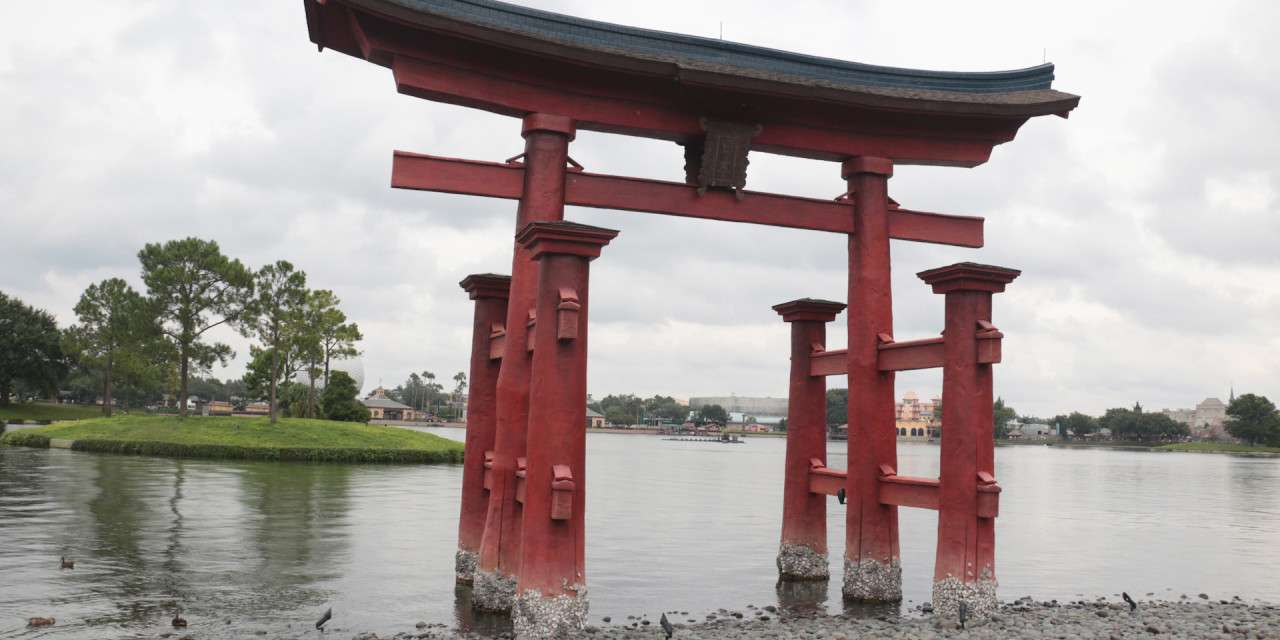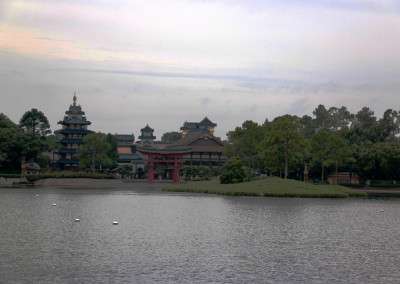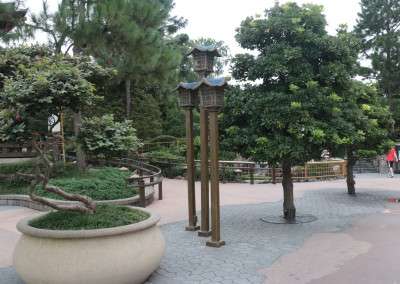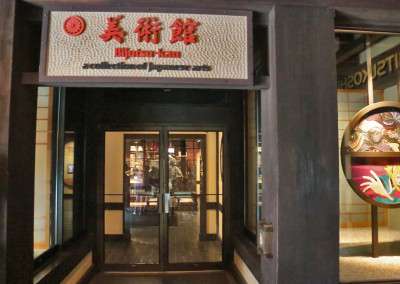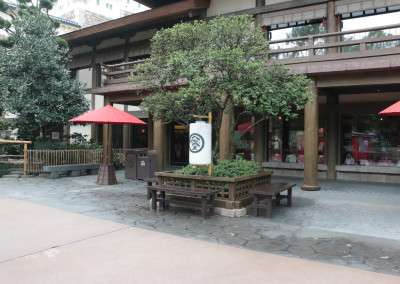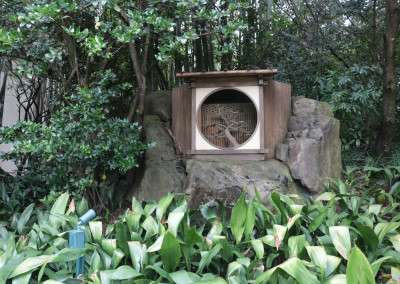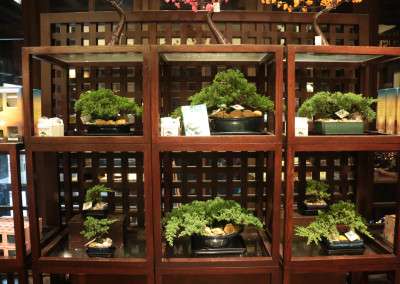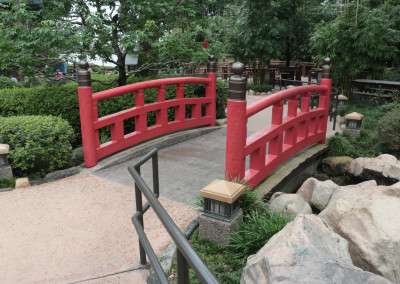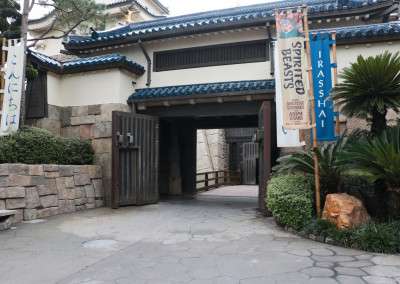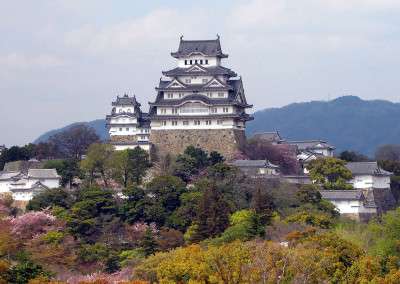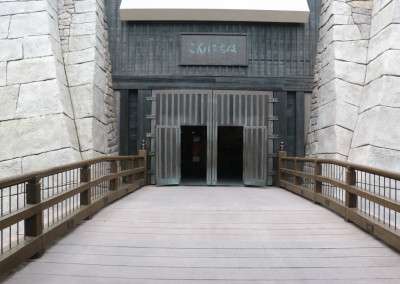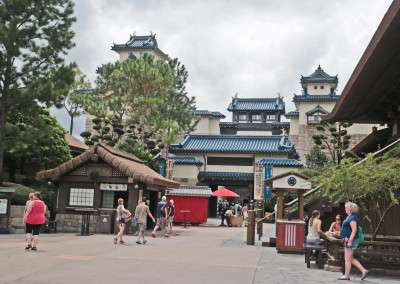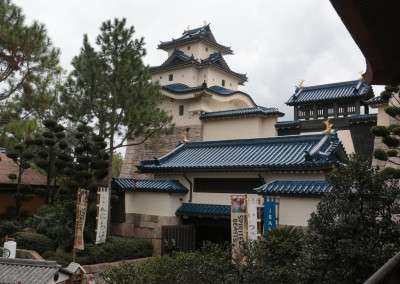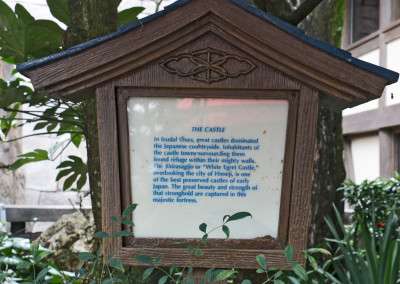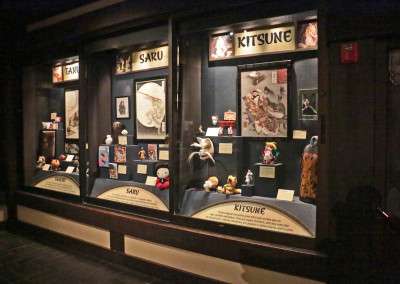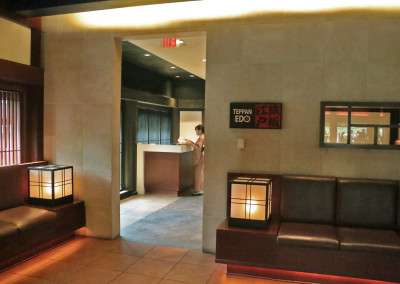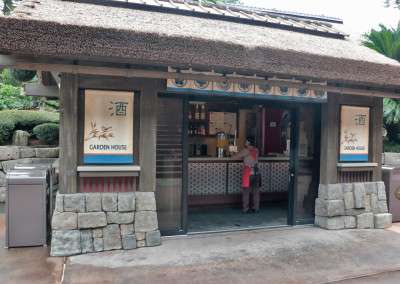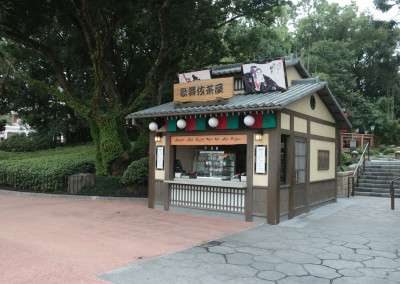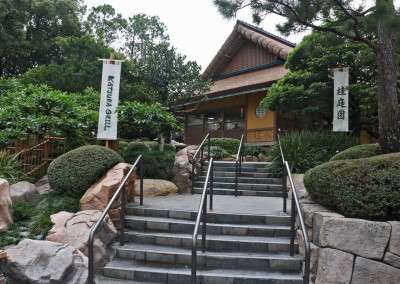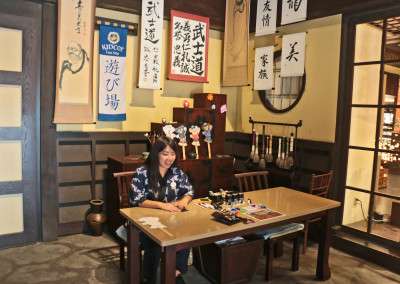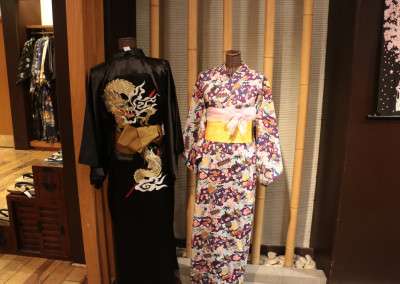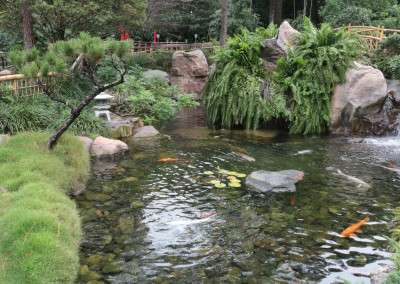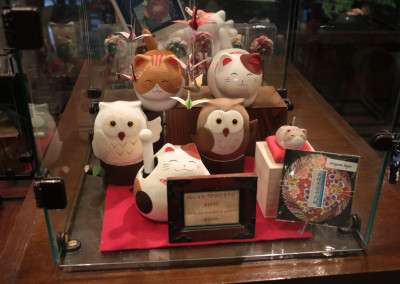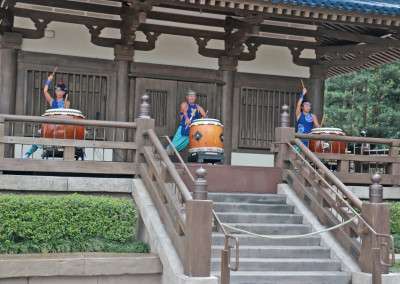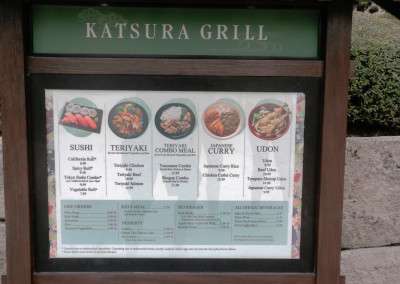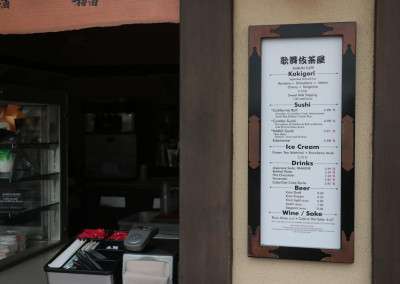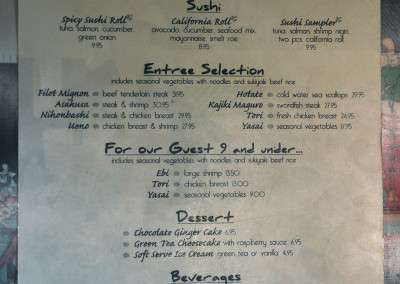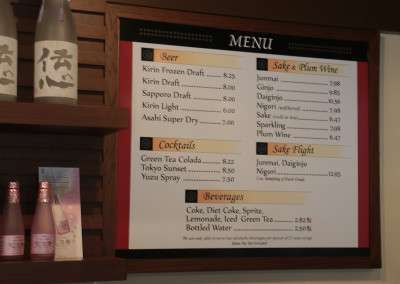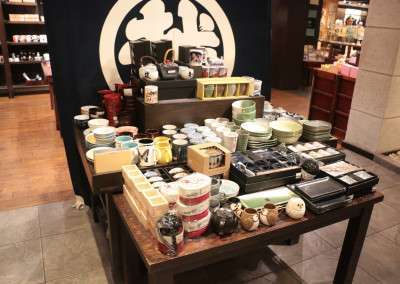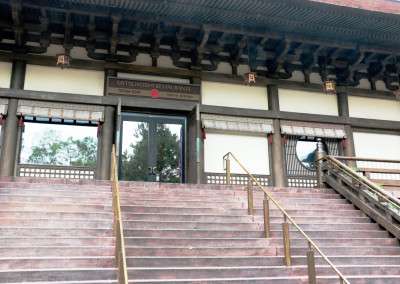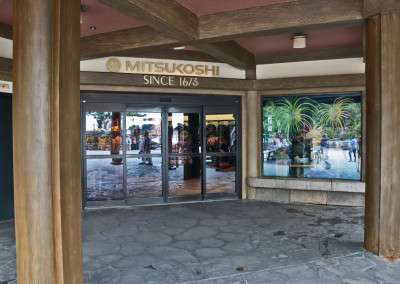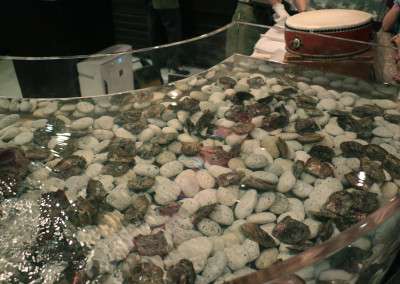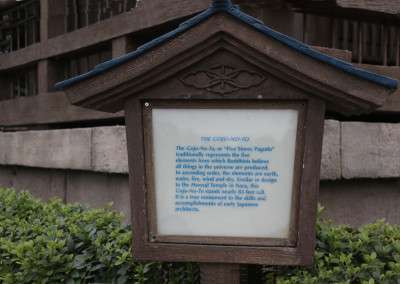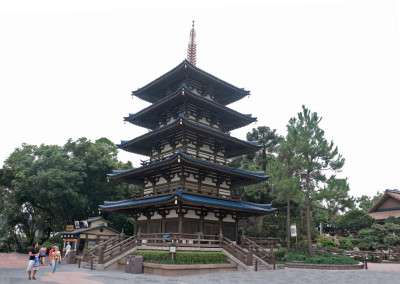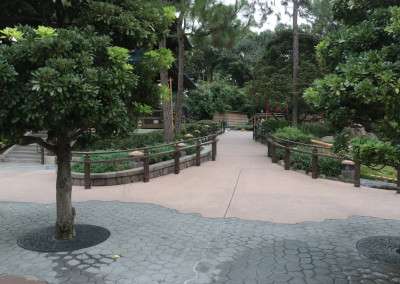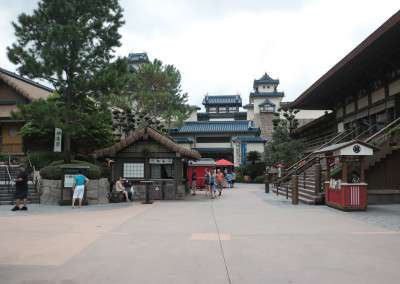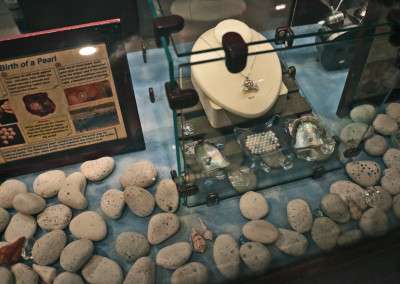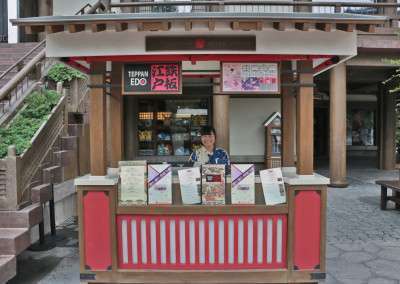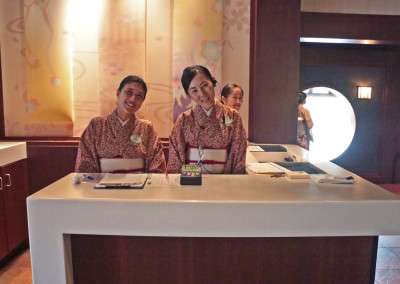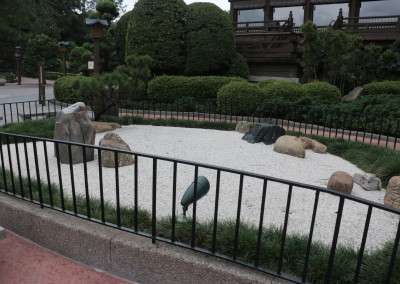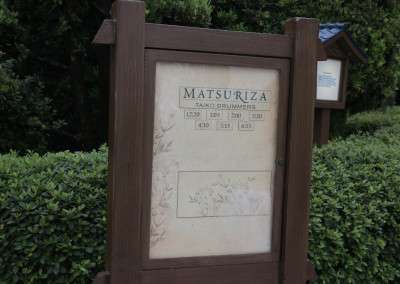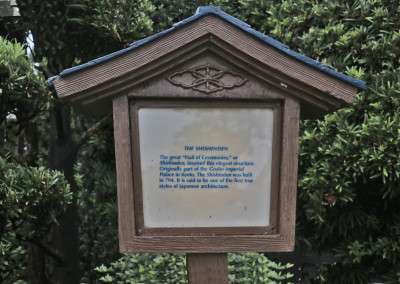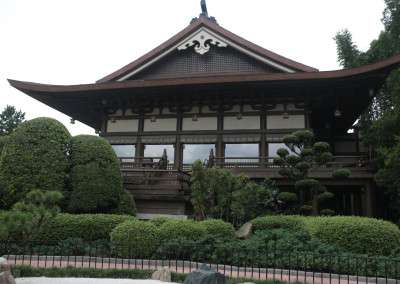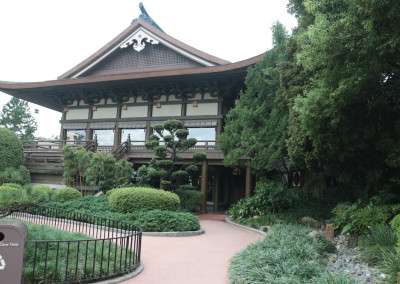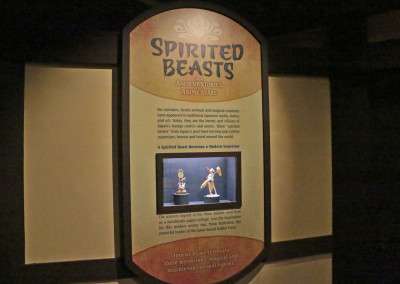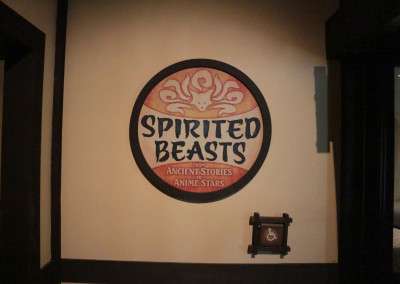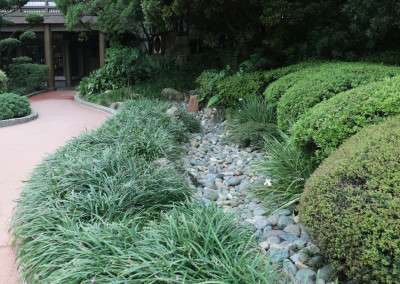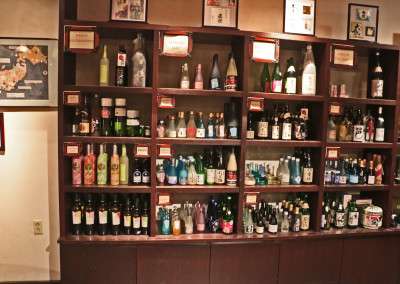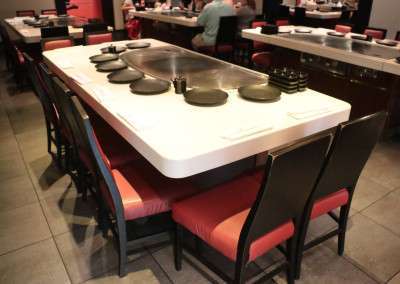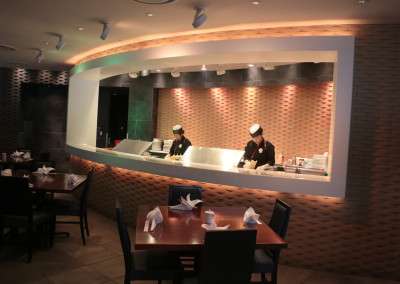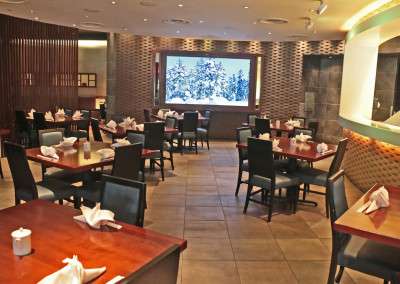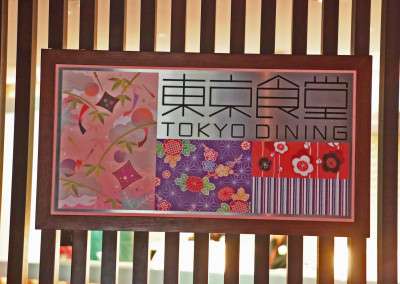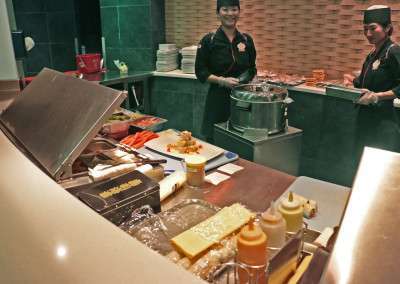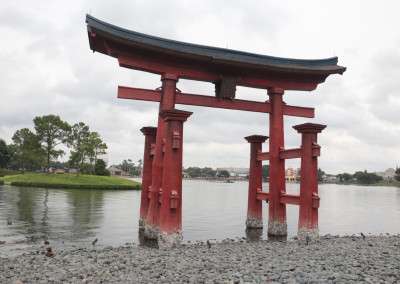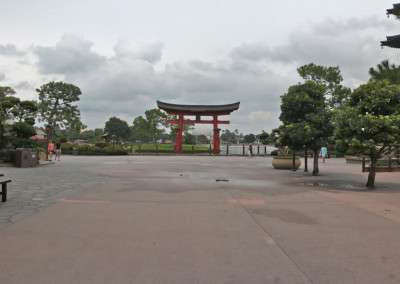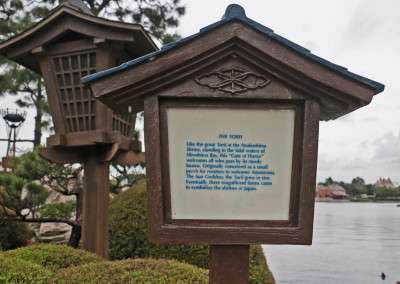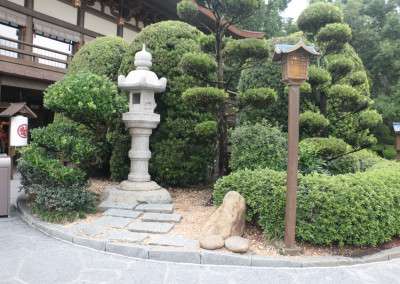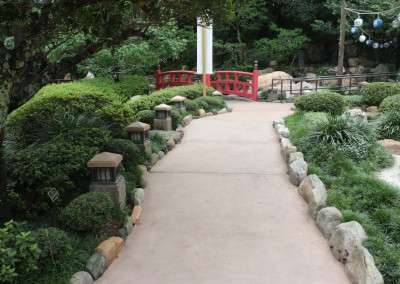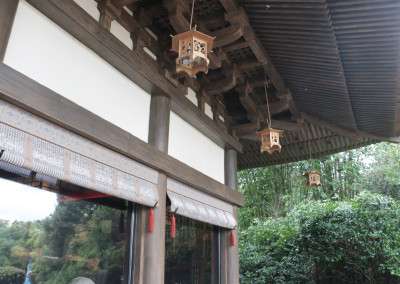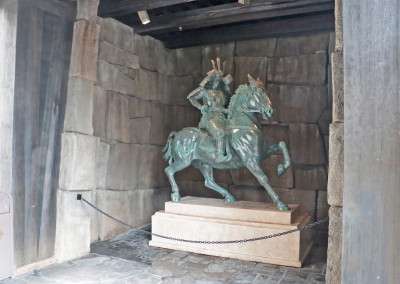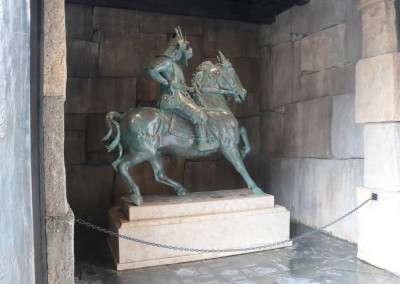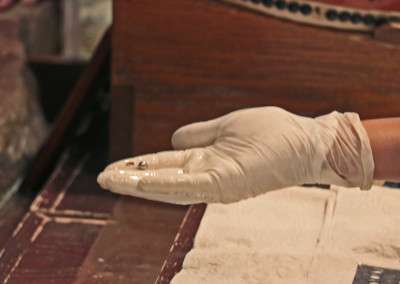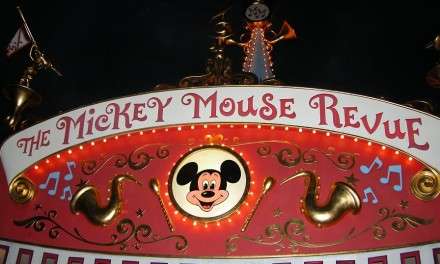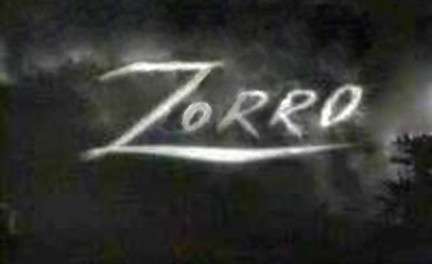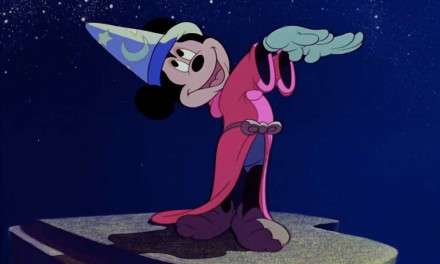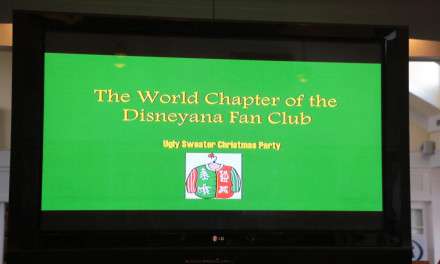For the last year I have been writing about the countries around World Showcase in EPCOT. Today, we’ll explore the wonders and visual beauty of the Japanese pavilion. This pavilion, much like its other Far-East tenant here China, is rich in detail, history and lore. The only Asian countries here at World Showcase are Japan and China. Although the countries share similar beliefs in religion, lore and architecture, their history and way of life are very different. These differences are apparent in the pavilions themselves. Since there is much to talk about, let’s break up the pavilion into select areas and discuss them one at a time…
RESTAURANTS…
All the pavilions have eateries that offer a taste of the home country for EPCOT guests. Sometimes, the food takes a tangent from the traditional fare for the American palate, but on the whole, it’s as authentic as can be next to being in the country itself. Japan’s table service restaurants are located in the stately building you see next to the pagoda. This is a replica of the Gosho Imperial Palace in Kyoto. (More on that later). This building houses the Mitsukoshi Department Store on the bottom and the restaurants on the top floor. The “Mitsukoshi Restaurants” comprise of Tokyo Dining and Teppan Edo restaurants. Teppan Edo, in which “Teppan” translates to “Iron Plate” and Edo, people or period is exactly like the Japanese steak house restaurants here at home. This is a fun place to eat, because it is a show in itself. Eight diners are seated around a large flattop grill, or Iron Plate. The atmosphere is relaxed and very casual. You will be seated with other guests, if your party is not large, but in no time at all, you will bond as one group at your “Chef” arrives and begins to prepare your meal.
The highlight of the meal is the preparation. Your chef is highly skilled, entertaining and funny. He does amazing things with a knife and spatula, putting on a show as he prepares your meal. The food here is excellent, and what can be fresher than cooked right in front of you. This ‘Teppanyaki” form of fare, means grilled, pan-fried or broiled Steak, chicken; shrimp and seasoned veggies. (Watch how the chef wwweins the shrimp, its amazing).
Tokyo Dining is a Susi lovers delight. All forms of Susi are offered, freshly made at the podium in front of the restaurant. In addition, Tempura, soups, salads, Chicken Teriyaki, Chirashi Zushi, desserts, beverages and even frozen beer are offered. Both restaurants, as with most Japanese eateries are a bit Spartan, but are comfortable and offer fine views of World Showcase by the windows. The restaurants open at 12pm, just before that time, a small ceremony of sorts is put on, welcoming guests to the restaurant and department store. It’s worth coming a bit early to view this. There is a small elevator to the second floor if the steps appear too daunting! As always, reservations are recommended, but early arrivals should get a table with little wait.
The next eatery is the former Yakitori House, re-imagined into the Katsura Grill, which opened December 7th, 2011. The main change is in the menu. Offerings include Udon (Thick wheat flour noodles), Curry, Teriyaki or Sushi. Located up on the hill, it is still in a beautiful and peaceful garden setting. Outdoor seating is available next to cool and beautiful Koi ponds. The name Katsura is from the Katsura Imperial Villa outside of Kyoto. It represents the many tea houses in Japan, and is located in a garden setting as are the ones in Japan. The “Tea” ceremony is a very old and an integral part of Japanese culture. Over time, it has evolved into an elaborate ceremony, and takes sometimes days to prepare.
In front of the pavilion to the left of the pagoda is the Kabuki Café. Aping similar stands in front of the other pavilions, this little quick-service sells Kakigōri (Flavored shaved ice), sushi, Japanese beer, wine and Sake and of course soda, hot chocolate and water. In the middle of the pavilion across from the Mitsukoshi is the “Garden House”. Here, another quick-service place for Japanese beer, sake, plum wine, soda lemonade and water. If you recall, this use to be a small merchandise shop, but it better serves as a beverage stop.
ARCHITECTURE…
Ordinary objects that Westerners take for granted, i.e. houses, trees, bridges even colors have much significance in the countries of Japan and China. Ever notice the upturned eaves on Chinese buildings? It is believed that evil spirits cannot enter the house because they will be skewered by the pointed eaves. Although Japan and China are neighbors, they do share many commonalities in beliefs and religion; they are in reality, very different. First up is the large red structure in front of the pavilion in the lagoon. Called a “Torrii”, it is a traditional Japanese gate either in or at the entrance of a Shinto Shrine. The Japanese believe in both the Shinto and Buddhism faiths, and a Torrii gate is a way to identify Shinto Shrines. They also can be found in Buddhist temples. They first appeared in Japan around the mid-Heian period because they are mentioned in a text written in 922. Their function is to mark the entrance to a sacred space, and passing under one marks the transition from the profane to the sacred. EPCOT’s example apes the one found on Coast of Itsukushima Island in southern Japan. Let’s look at the imposing white castle at the rear of the pavilion…Known as the “White Egret Castle” Hakuro-jō or Shirasagi-jō “White Heron Castle” because of its striking white exterior, it appears as a bird taking flight. Named the “Himeji Castle”, it represents the original Japanese castle complex located in Himeji, in Hyōgo Prefecture, Japan. Constructed of Wood and Stone, much like its European equivalents, it was used for defense of the kingdom. And the common people lived near the castle for protection. These castles date back to 1333, when Akamatsu Norimura built a fort on top of Himeyama hill.
Inside the castle is part of the Mitsukoshi Department store, the Kidcot station and a wonderful museum called Bijutsu-kan, meaning “Art-sensitive” Inside you will find an exhibit called “Spirit Beasts: From Ancient Stories to Anime Stars.” Throughout the ages, Japanese lore contained magical and heroic animals. This display showcases their stories, both in animation today (manga and anime) and traditional stories.
Moving back to the front, take notice of the large five story pagoda called Goju-no-to. Pagodas are linked to Buddhism and this is a replica of the one found in Ikaruga, Nara Prefecture, Japan. It is acknowledged to be one of the oldest wooden buildings existing in the world. One of the largest differences in Japanese and Chinese cultures is that the Chinese use more vibrant colors and are more flamboyant in their construction techniques, whereas the Japanese are more subdued and employ simpler lines in buildings. Even the gardens are different; Japan’s are more orderly and neat, where the Chinese appear more natural and flowing. The Pagoda is five stories, reflection the number of elements that the Buddhists believe the universe was created with… Earth, Water, Fire, Wind, and Sky. Topping off the Pagoda is a structure called the Sōrin. It’s a vertical shaft or a finial which tops a Japanese pagoda, either made of stone or wood. This Pagoda has several Chinese aspects incorporated in it when the Imagineers constructed it, thus it is not a true facsimile of the original.
Other Japanese features showcased at the pavilion are integral part of Japanese life and culture. Take lanterns. For thousands of years, these were the traditional sources of light. The traditional lighting of Japan includes the Andon, the Bonbori, the Chōchin, and the Tōrō. The Andon is lamp consisting of paper stretched over a frame of bamboo, wood or metal. The Bonbori is Japanese paper lamp used in the open. It normally has a hexagonal contour and is used during festivals. The Chōchin has a frame of split bamboo wound in a spiral. Paper protects the flame from wind. And the Tōrō, which can mean any lamp of stone, bronze, iron, wood, or another heavy material. These were for lighting Buddhist and Shinto shrines, and gardens. Look around and see how many you can spot.
Trees and Flowers also have much meaning. Azaleas are celebrated with festivals, and evergreens are considered icons of eternal life. You will also see here a Monkey-puzzle tree, Sago Palm and Japanese maple. Japanese gardens consist of a combination of these elements, including bridges which cross over them. Bridges denote evolution, passing from one part of life to another. Fish are usually seen in gardens. The breed, Koi are actually carp, carefully bred for their striking colors for ponds and water gardens. Another type of garden common in Japan is the rock garden. Called “Karesansui” or “Dry Landscape” They have no water or vegetation, but sand or small gravel along with rocks or larger boulders suggest oceans, lakes, rivers or the sky. These gardens are maintained by Zen Buddhist priests. It is supposed to help in meditation and concentration. If you look to the right of the pavilion, you will also see a rock bed leading up to a small waterfall, and an encased bonsai tree atop a large rock formation.
SHOPPING…
For souvenir hunters, one of the nicest merchandising stores in World Showcase is the Mitsukoshi Department Store. This is a huge store with lots of goodies. Mitsukoshi is an old concern, beginning in 1673 in Edo, the old name for Tokyo today. In 1904, they opened the first westernized store in Japan. From the beginning, they have nurtured the spirit of “Hospitality with Sincerity” and this continues today. Almost “everything’ Japanese can be had here: From swords, books, spirits, Kimono’s, everything. It is crowded, but a fun place to shop. You can even buy a live oyster (mollusk) and get your own cultured pearl. Although pearls occur naturally in oysters, they have been farmed for better consistency and yield. The Mikimoto Company has farmed cultured pearls over a century and here you can pick your own oyster from one of two tanks. The cast member, with a little pomp and circumstance will retrieve the pearl, measure it and you take it home! It’s really fun watching the process. If you ever wondered what those little cats with the waving paw represents, you came upon Maneki Neko, or beckoning or invited cat. They go by other names as well. These cats are believed to be good luck charms and are placed in windows and store entrances. Traditionally it is a calico Japanese Bobtail cat. Maneki-Neko comes in different colors, styles and gradations of ornateness. Common colors are white, black, gold and sometimes red. They date back more than 500 years, and are sometimes called the “Chinese lucky cat” in some cases due to its huge popularity among the Chinese also. All in all, you must stop by and check this store out.
ENTERTAINMENT…
Although there is no ride attraction here, one of the most popular shows in World Showcase is the group of drummers called “Matsuriza”; Japanese Traditional Taiko Drummers or Festival in Japanese and “Taiko” of course, drums. The doctrines of Matsuriza are “Shin” (Pure spirit), “Rei” (Proper decorum), and “Tai” (Healthy body). Mind and Body are very important for well-being and these drummers build on focus, caring and teamwork. Its history is centuries old. Beginning in religious ceremonies in shrines, it changed throughout the years; also being used in festivals to pray for rain and for soldiers in the battlefields. The current leader of Matsuriza, Takemasa Ishikura, began performing here at EPCOT in 1983 under the leadership of Yoshihisa Ishikura, who returned to Japan in 1998. Takemasa took over, forming the now Matsuriza Japanese Traditional Taiko Drummers. Look to your times guide for show times.
Much like the German pavilion which was to have a ride attraction that never materialized, Japan here was also slated for one. Called “Meet the World” its basic premise was to explore the history of Japan in a 19 minute show, focusing on the history of Japan’s encounter with the outside world. It was to have a dialogue with an audio-animatronic crane telling Japan’s history to a boy and girl from Yokohama. This was to take place in a rotating theater similar to “Carousel of Progress”, but with the guests sitting inside the hub of the theater with the scenes rotating around them. Designed by Disney legend Claude Coates and with the opening song written by the Sherman Brothers, it opened in Tokyo Disneyland on April 15, 1983, closing on June 30th, 2002 replaced by Monsters Inc., Ride and Go seek. The attraction building was even constructed at the pavilion, but because of the sensitive discussion of Japan’s involvement in WWII, Disney was concerned about reactions from guests and veterans over this subject because it was under-emphasized in the show. The show mentions that there were some “dark days” between the Meiji Restoration and the “Japan of today, so it never materialized here.
There were other attraction ideas that never made it. One was taking a Japanese “Bullet Train” (Shinkansen) on a trip through Japan via movie screens around the train; or a roller coaster ride similar to the Bobsleds in Disneyland, but routing through Mount Fuji. So there you have the Japan Pavilion. Again, with all the detail and history, you could literally spend several days to take every little detail in. Just walking through Mitsukoshi Department Store can talk several hours! So take your time walking through this fascinating country Japan.

